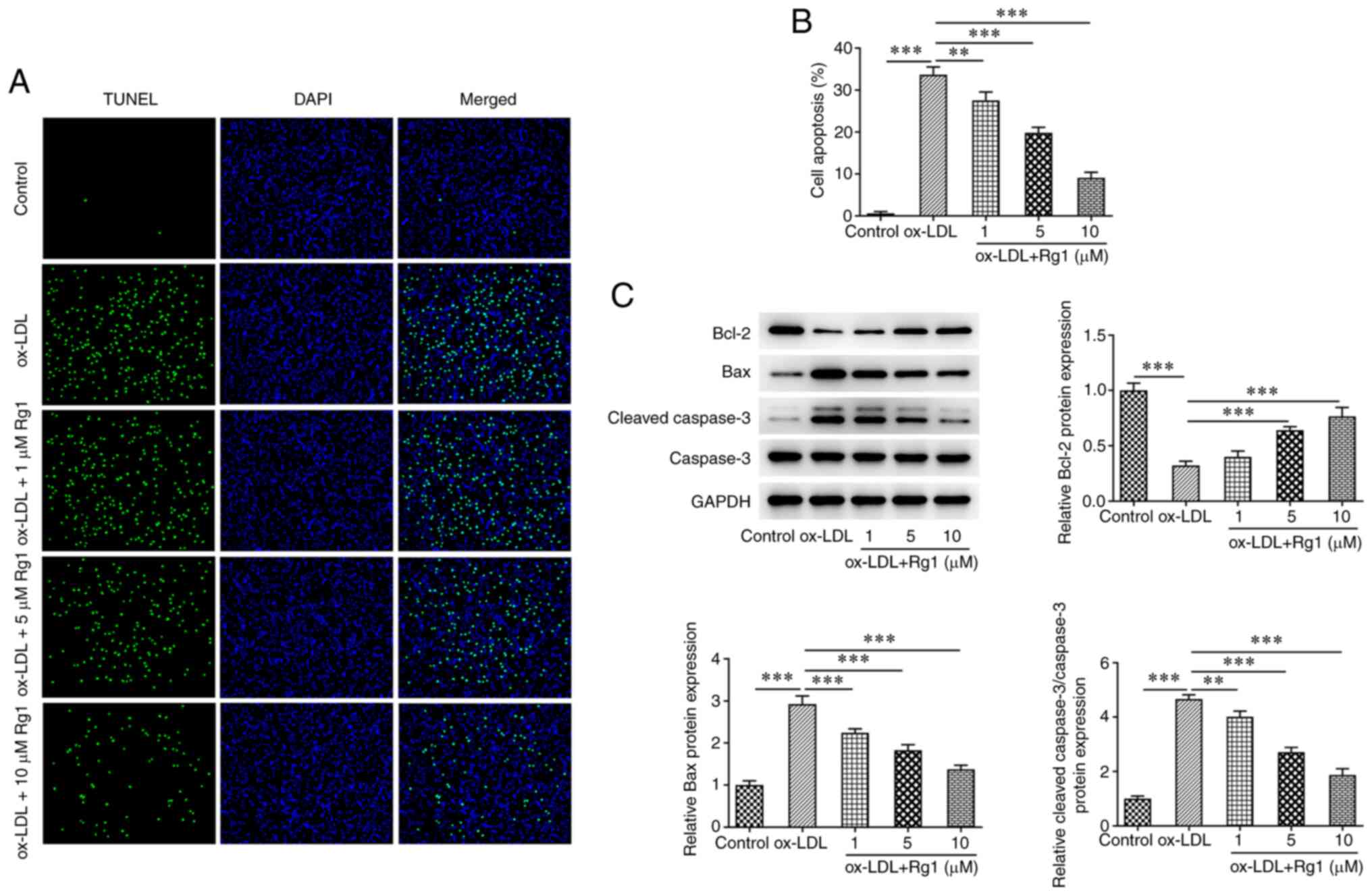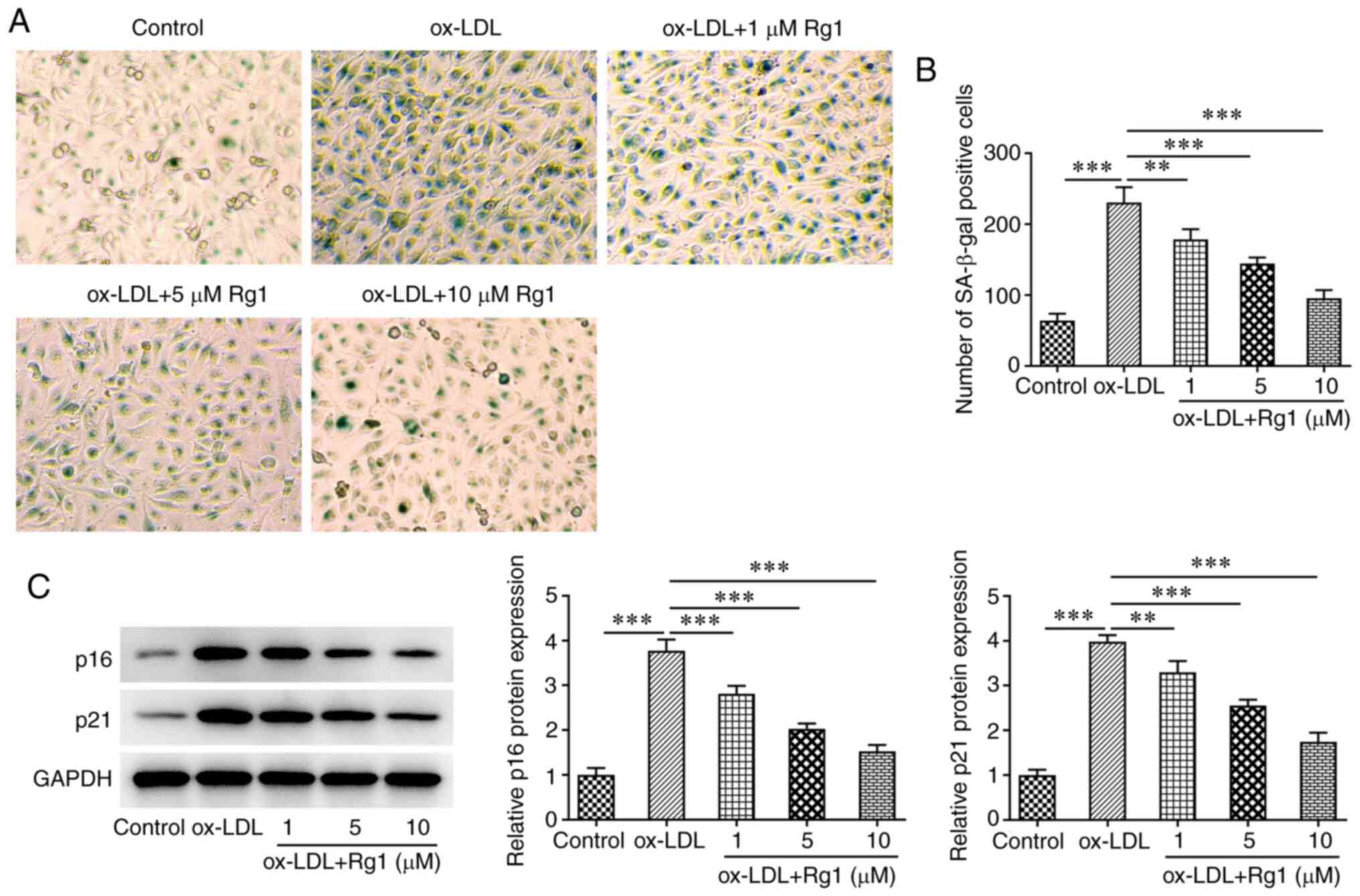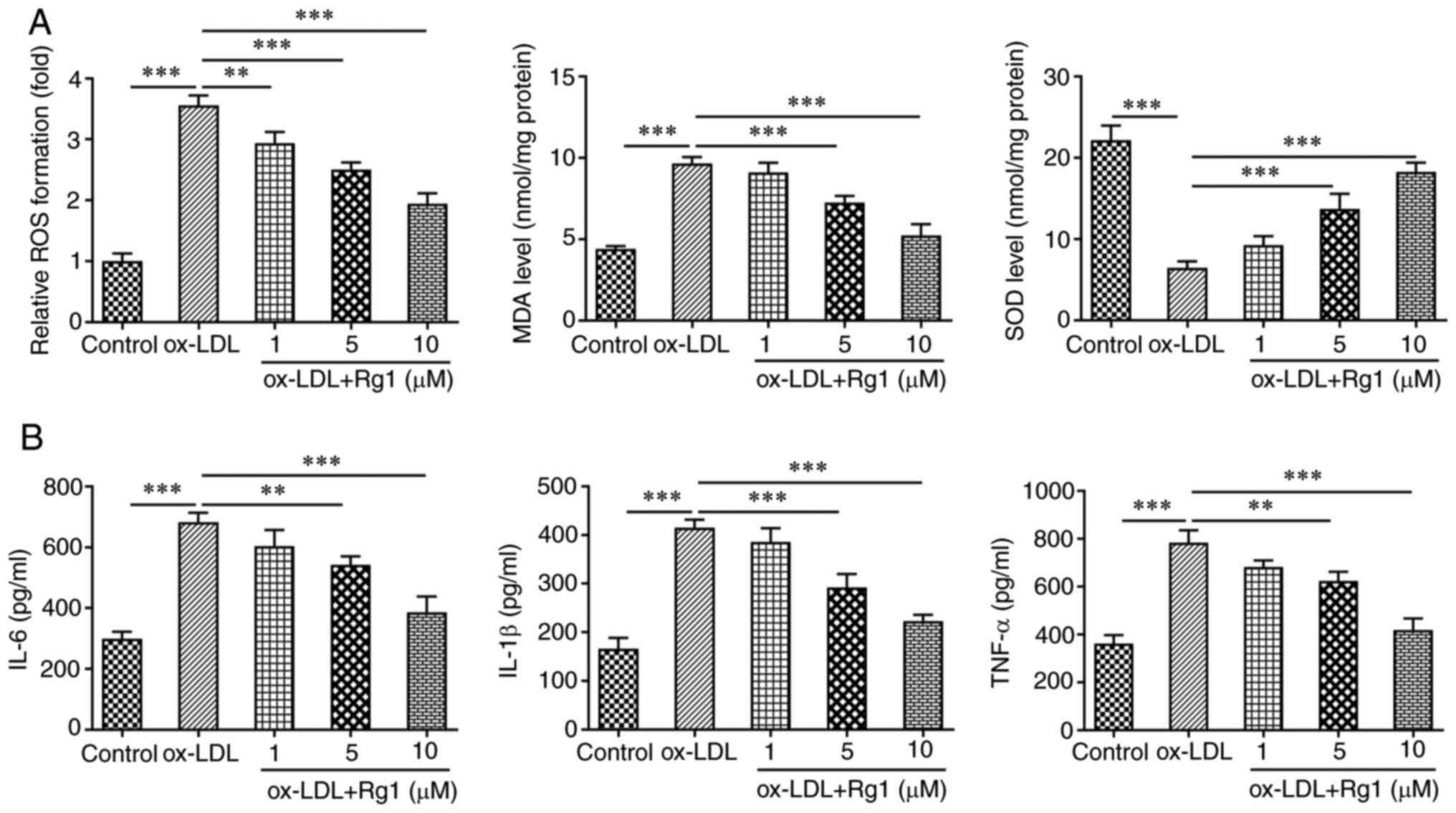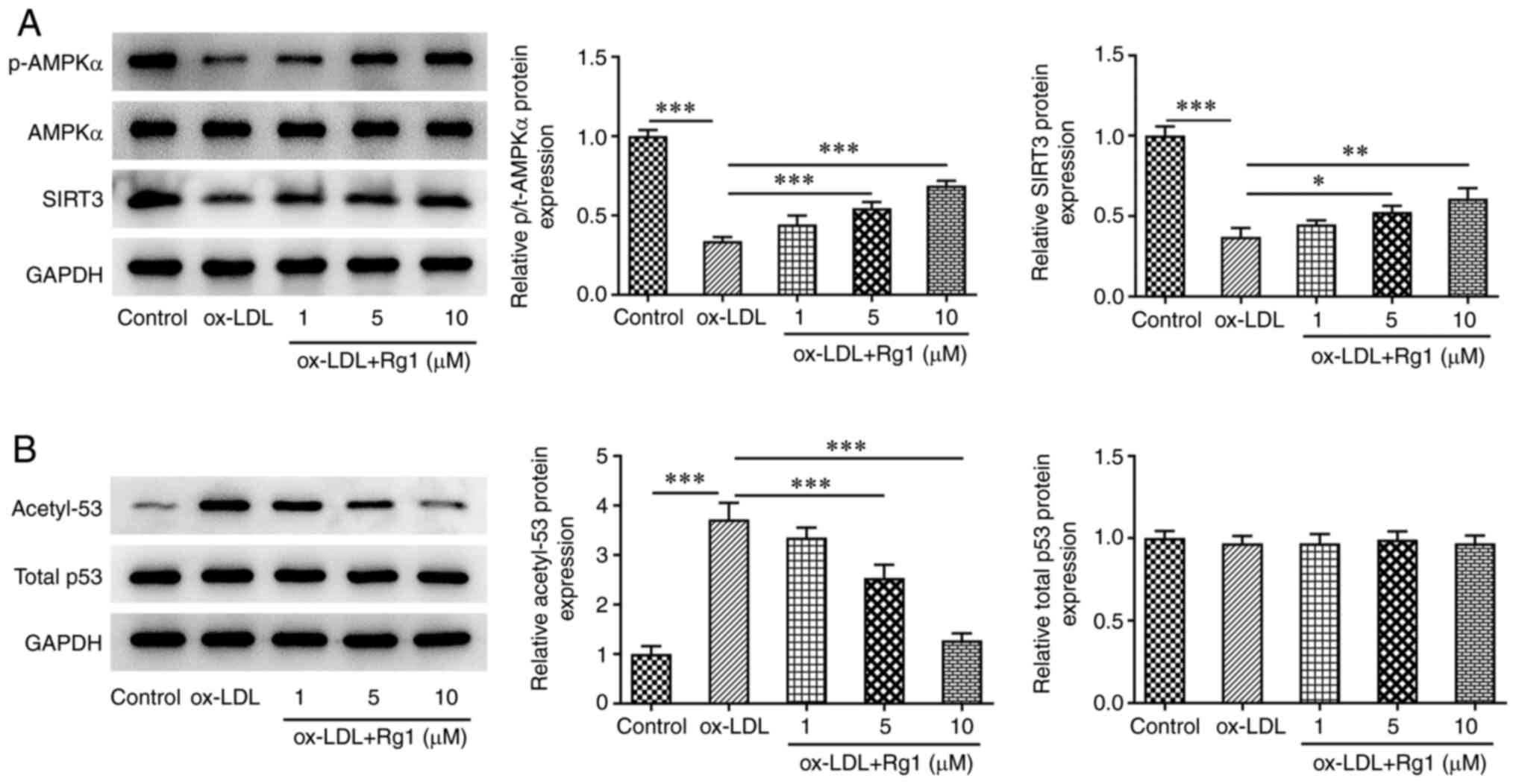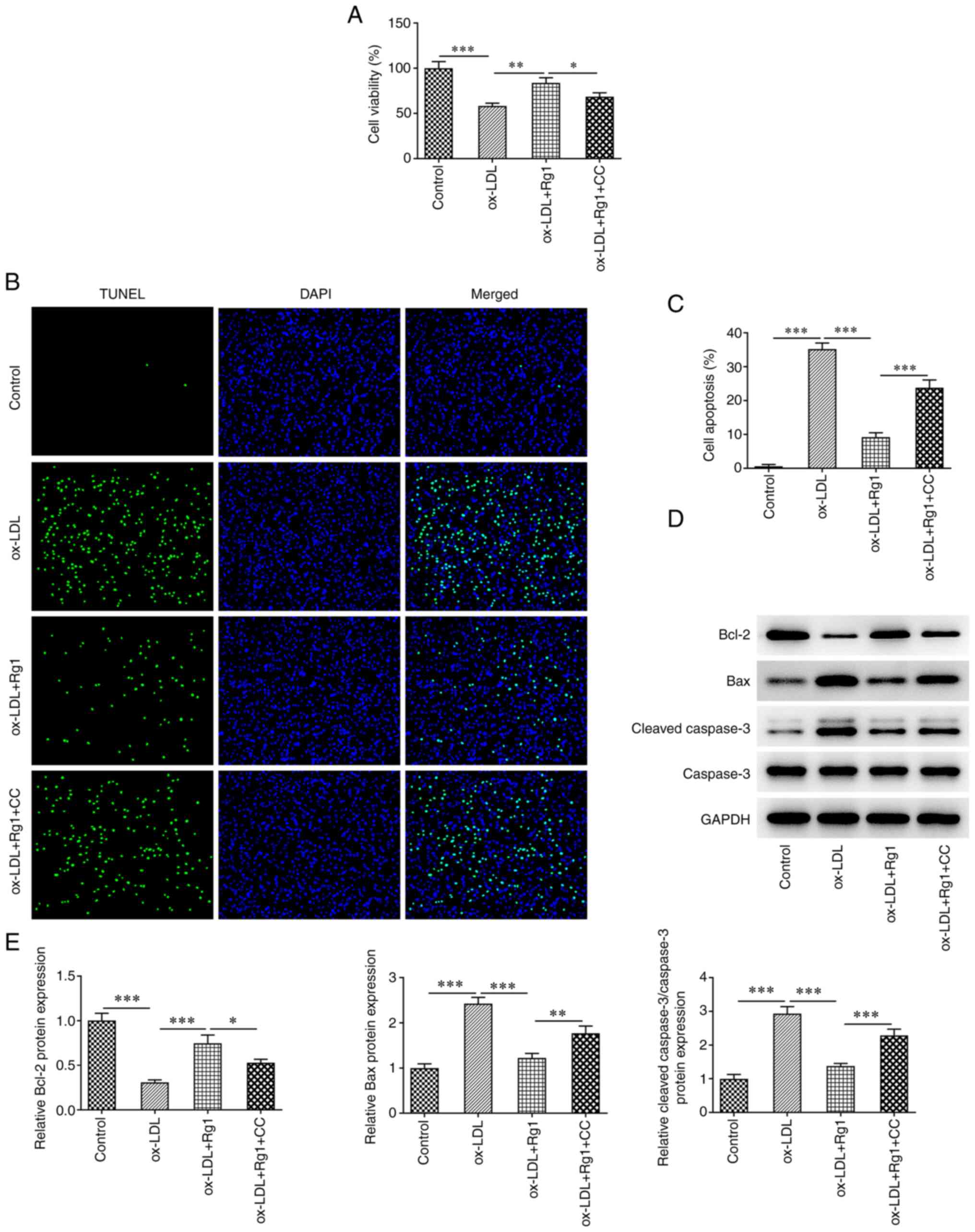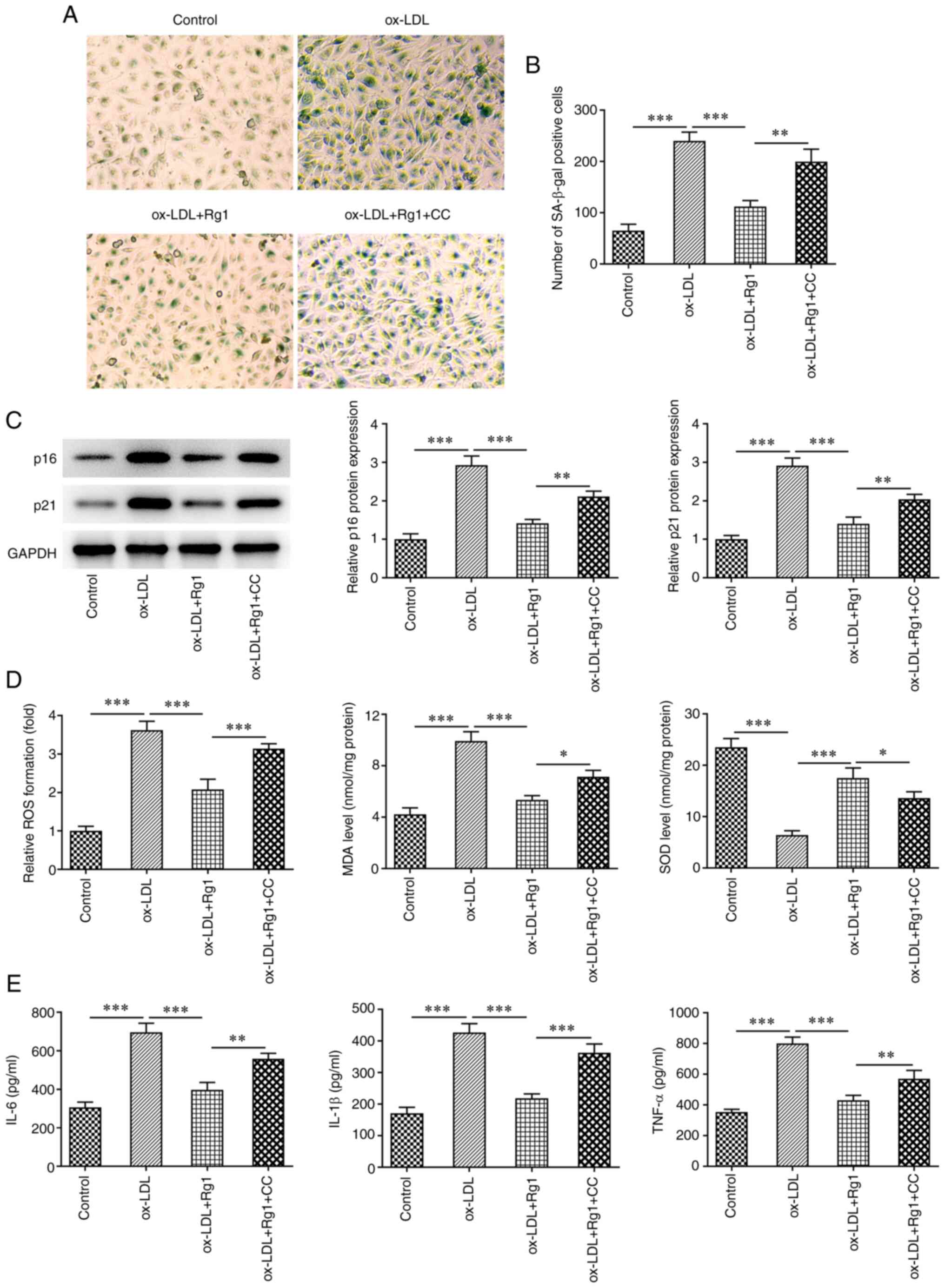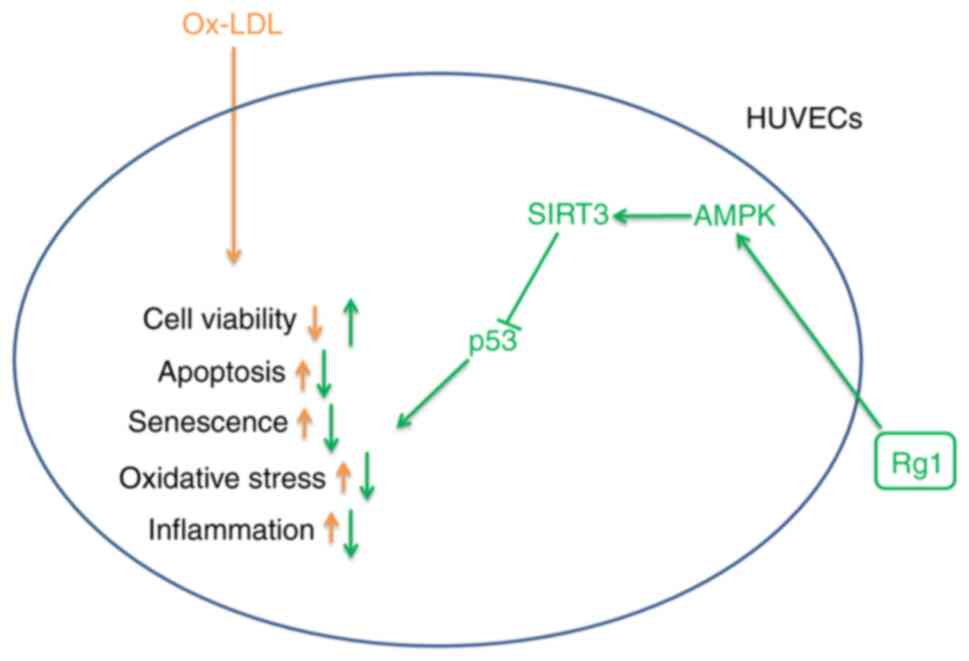|
1
|
Liang F and Wang Y: Coronary heart disease
and atrial fibrillation: A vicious cycle. Am J Physiol Heart Circ
Physiol. 320:H1–H12. 2021.PubMed/NCBI View Article : Google Scholar
|
|
2
|
Wirtz PH and von Känel R: Psychological
stress, inflammation, and coronary heart disease. Curr Cardiol Rep.
19(111)2017.PubMed/NCBI View Article : Google Scholar
|
|
3
|
Gimbrone MA Jr and Garcia-Cardeña G:
Endothelial cell dysfunction and the pathobiology of
atherosclerosis. Circ Res. 118:620–636. 2016.PubMed/NCBI View Article : Google Scholar
|
|
4
|
Deanfield JE, Halcox JP and Rabelink TJ:
Endothelial function and dysfunction: Testing and clinical
relevance. Circulation. 115:1285–1295. 2007.PubMed/NCBI View Article : Google Scholar
|
|
5
|
Palombo C and Kozakova M: Arterial
stiffness, atherosclerosis and cardiovascular risk:
Pathophysiologic mechanisms and emerging clinical indications.
Vascul Pharmacol. 77:1–7. 2016.PubMed/NCBI View Article : Google Scholar
|
|
6
|
Balta S: Endothelial dysfunction and
inflammatory markers of vascular disease. Curr Vasc Pharmacol.
19:243–249. 2021.PubMed/NCBI View Article : Google Scholar
|
|
7
|
Tesauro M, Mauriello A, Rovella V,
Annicchiarico-Petruzzelli M, Cardillo C, Melino G and Di Daniele N:
Arterial ageing: From endothelial dysfunction to vascular
calcification. J Intern Med. 281:471–482. 2017.PubMed/NCBI View Article : Google Scholar
|
|
8
|
Jing R, Zhong QQ, Long TY, Pan W and Qian
ZX: Downregulated miRNA-26a-5p induces the apoptosis of endothelial
cells in coronary heart disease by inhibiting PI3K/AKT pathway. Eur
Rev Med Pharmacol Sci. 23:4940–4947. 2019.PubMed/NCBI View Article : Google Scholar
|
|
9
|
Gao ZF, Ji XL, Gu J, Wang XY, Ding L and
Zhang H: microRNA-107 protects against inflammation and endoplasmic
reticulum stress of vascular endothelial cells via KRT1-dependent
Notch signaling pathway in a mouse model of coronary
atherosclerosis. J Cell Physiol. 234:12029–12041. 2019.PubMed/NCBI View Article : Google Scholar
|
|
10
|
Wu X, Zheng W, Jin P, Hu J and Zhou Q:
Role of IGFBP1 in the senescence of vascular endothelial cells and
severity of aging-related coronary atherosclerosis. Int J Mol Med.
44:1921–1931. 2019.PubMed/NCBI View Article : Google Scholar
|
|
11
|
Li H, Huang N, Zhu W, Wu J, Yang X, Teng
W, Tian J, Fang Z, Luo Y, Chen M and Li Y: Modulation the crosstalk
between tumor-associated macrophages and non-small cell lung cancer
to inhibit tumor migration and invasion by ginsenoside Rh2. BMC
Cancer. 18(579)2018.PubMed/NCBI View Article : Google Scholar
|
|
12
|
Sun M, Ye Y, Xiao L, Duan X, Zhang Y and
Zhang H: Anticancer effects of ginsenoside Rg3 (review). Int J Mol
Med. 39:507–518. 2017.PubMed/NCBI View Article : Google Scholar
|
|
13
|
Zhou P, Xie W, He S, Sun Y, Meng X, Sun G
and Sun X: Ginsenoside Rb1 as an anti-diabetic agent and its
underlying mechanism analysis. Cells. 8(204)2019.PubMed/NCBI View Article : Google Scholar
|
|
14
|
Yang R, Yin D, Yang D, Liu X, Zhou Q, Pan
Y, Li J and Li S: Xinnaokang improves cecal microbiota and lipid
metabolism to target atherosclerosis. Lett Appl Microbiol.
73:779–792. 2021.PubMed/NCBI View Article : Google Scholar
|
|
15
|
Yang P, Ling L, Sun W, Yang J, Zhang L,
Chang G, Guo J, Sun J, Sun L and Lu D: Ginsenoside Rg1 inhibits
apoptosis by increasing autophagy via the AMPK/mTOR signaling in
serum deprivation macrophages. Acta Biochim Biophys Sin (Shanghai).
50:144–155. 2018.PubMed/NCBI View Article : Google Scholar
|
|
16
|
Pan C, Huo Y, An X, Singh G, Chen M, Yang
Z, Pu J and Li J: Panax notoginseng and its components decreased
hypertension via stimulation of endothelial-dependent vessel
dilatation. Vascul Pharmacol. 56:150–158. 2012.PubMed/NCBI View Article : Google Scholar
|
|
17
|
Zhu T, Wang H, Wang L, Zhong X, Huang W,
Deng X, Guo H, Xiong J, Xu Y and Fan J: Ginsenoside Rg1 attenuates
high glucose-induced endothelial barrier dysfunction in human
umbilical vein endothelial cells by protecting the endothelial
glycocalyx. Exp Ther Med. 17:3727–3733. 2019.PubMed/NCBI View Article : Google Scholar
|
|
18
|
Chen J, Zhang X, Liu X, Zhang C, Shang W,
Xue J, Chen R, Xing Y, Song D and Xu R: Ginsenoside Rg1 promotes
cerebral angiogenesis via the PI3K/Akt/mTOR signaling pathway in
ischemic mice. Eur J Pharmacol. 856(172418)2019.PubMed/NCBI View Article : Google Scholar
|
|
19
|
Zhang Y, Ding S, Chen Y, Sun Z, Zhang J,
Han Y, Dong X, Fang Z and Li W: Ginsenoside Rg1 alleviates
lipopolysaccharide-induced neuronal damage by inhibiting NLRP1
inflammasomes in HT22 cells. Exp Ther Med. 22(782)2021.PubMed/NCBI View Article : Google Scholar
|
|
20
|
Krankel N, Luscher TF and Landmesser U:
Novel insights into vascular repair mechanisms. Curr Pharm Des.
20:2430–2438. 2014.PubMed/NCBI View Article : Google Scholar
|
|
21
|
Jin JL, Zhang HW, Cao YX, Liu HH, Hua Q,
Li YF, Zhang Y, Guo YL, Wu NQ, Zhu CG, et al: Long-term prognostic
utility of low-density lipoprotein (LDL) triglyceride in real-world
patients with coronary artery disease and diabetes or prediabetes.
Cardiovasc Diabetol. 19(152)2020.PubMed/NCBI View Article : Google Scholar
|
|
22
|
Kattoor AJ, Kanuri SH and Mehta JL: Role
of Ox-LDL and LOX-1 in atherogenesis. Curr Med Chem. 26:1693–1700.
2019.PubMed/NCBI View Article : Google Scholar
|
|
23
|
Chen L, Yang W, Guo Y, Chen W, Zheng P,
Zeng J and Tong W: Exosomal lncRNA GAS5 regulates the apoptosis of
macrophages and vascular endothelial cells in atherosclerosis. PLoS
One. 12(e0185406)2017.PubMed/NCBI View Article : Google Scholar
|
|
24
|
Wang Y, Che J, Zhao H, Tang J and Shi G:
Paeoniflorin attenuates oxidized low-density lipoprotein-induced
apoptosis and adhesion molecule expression by autophagy enhancement
in human umbilical vein endothelial cells. J Cell Biochem.
120:9291–9299. 2019.PubMed/NCBI View Article : Google Scholar
|
|
25
|
Zhang D, Bi Z, Li Y, Zheng H, Li L, Ouyang
J, Wang B and Bi Y: Sodium ferulate modified gene expression
profile of oxidized low-density lipoprotein-stimulated human
umbilical vein endothelial cells. J Cardiovasc Pharmacol Ther.
14:302–313. 2009.PubMed/NCBI View Article : Google Scholar
|
|
26
|
Xie W, Zhou P, Sun Y, Meng X, Dai Z, Sun G
and Sun X: Protective effects and target network analysis of
ginsenoside Rg1 in cerebral ischemia and reperfusion injury: A
comprehensive overview of experimental studies. Cells.
7(270)2018.PubMed/NCBI View Article : Google Scholar
|
|
27
|
Gao Y, Chu S, Zhang Z and Chen N:
Hepataprotective effects of ginsenoside Rg1-a review. J
Ethnopharmacol. 206:178–183. 2017.PubMed/NCBI View Article : Google Scholar
|
|
28
|
Luo M, Yan D, Sun Q, Tao J, Xu L, Sun H
and Zhao H: Ginsenoside Rg1 attenuates cardiomyocyte apoptosis and
inflammation via the TLR4/NF-kB/NLRP3 pathway. J Cell Biochem.
121:2994–3004. 2020.PubMed/NCBI View Article : Google Scholar
|
|
29
|
Wang Z, Jiang R, Wang L, Chen X, Xiang Y,
Chen L, Xiao M, Ling L and Wang Y: Ginsenoside Rg1 improves
differentiation by inhibiting senescence of human bone marrow
mesenchymal stem cell via GSK-3β and β-catenin. Stem Cells Int.
2020(2365814)2020.PubMed/NCBI View Article : Google Scholar
|
|
30
|
Qin Q, Lin N, Huang H, Zhang X, Cao X,
Wang Y and Li P: Ginsenoside Rg1 ameliorates cardiac oxidative
stress and inflammation in streptozotocin-induced diabetic rats.
Diabetes Metab Syndr Obes. 12:1091–1103. 2019.PubMed/NCBI View Article : Google Scholar
|
|
31
|
Zhang L, Li Y, Ma X, Liu J, Wang X, Zhang
L, Li C, Li Y and Yang W: Ginsenoside Rg1-notoginsenoside
R1-protocatechuic aldehyde reduces atherosclerosis and attenuates
low-shear stress-induced vascular endothelial cell dysfunction.
Front Pharmacol. 11(588259)2020.PubMed/NCBI View Article : Google Scholar
|
|
32
|
Zhou Y, Wang YP, He YH and Ding JC:
Ginsenoside Rg1 performs anti-aging functions by suppressing
mitochondrial pathway-mediated apoptosis and activating sirtuin 3
(SIRT3)/superoxide dismutase 2 (SOD2) pathway in Sca-1(+) HSC/HPC
cells of an aging rat model. Med Sci Monit.
26(e920666)2020.PubMed/NCBI View Article : Google Scholar
|
|
33
|
Chen T, Ma C, Fan G, Liu H, Lin X, Li J,
Li N, Wang S, Zeng M, Zhang Y and Bu P: SIRT3 protects endothelial
cells from high glucose-induced senescence and dysfunction via the
p53 pathway. Life Sci. 264(118724)2021.PubMed/NCBI View Article : Google Scholar
|
|
34
|
Han L, Li J, Li J, Pan C, Xiao Y, Lan X
and Wang M: Activation of AMPK/Sirt3 pathway by phloretin reduces
mitochondrial ROS in vascular endothelium by increasing the
activity of MnSOD via deacetylation. Food Funct. 11:3073–3083.
2020.PubMed/NCBI View Article : Google Scholar
|
















